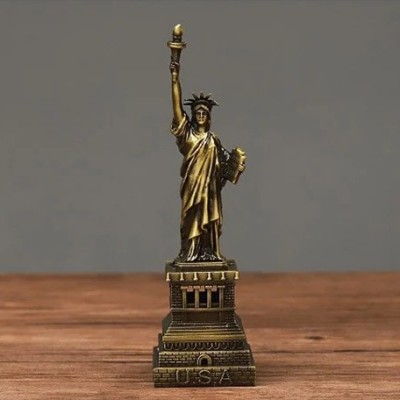
reactormag.com
Five Horror Books Set in Liminal Spaces
Books
Horror
Five Horror Books Set in Liminal Spaces
Endless, eerie, impossible places — do you explore, or run like hell?
By Lorna Wallace
|
Published on October 16, 2025
Photo by Adrian Mag [via Unsplash]
Comment
0
Share New
Share
Photo by Adrian Mag [via Unsplash]
Liminal horror can be a bit of a murky category, slightly hard to define. Describing a space as “liminal” usually means that it’s “in-between” or “transitional”—a place that feels uncanny, or perhaps strangely familiar but somehow wrong—but I don’t think that fully covers what we mean in the context of horror fiction. In my opinion, there are two other things that can also make a setting feel like a liminal space: endlessness and eeriness.
Endlessness comes from the physicality of the space itself—think of a tunnel that seems to stretch on as far as the eye can see. But it’s not just about architecture, it’s also about a space’s purpose…and that’s where eeriness comes in. Abandoned malls, for example, can be described as liminal because they used to be bustling and full of life, but they’re now empty, and that contrast evokes an eerie, haunting feeling.
In horror stories, authors are able to push the creepiness of liminality even further by adding supernatural elements into the mix, be that a road through the woods that only appears once a year or a corridor that shouldn’t exist between two buildings—you’ll find these and more in the five horror books below.
A Short Stay in Hell by Steven L. Peck (2009)
When Soren Johansson dies, he finds himself in a rather unexpected afterlife: an unfathomably large library. While that might sound like a dream come true to any bookworm (speaking for myself here), this library is actually a version of Hell and Soren can only escape if he finds the book that tells the story of his life. That might not sound that hard, but the library contains a copy of every book that could ever possibly be written—including (and, in fact, mostly) books that are complete gibberish.
Still, Soren starts his journey in good spirits. He can’t see the beginning or end of the library, but he isn’t eternally burning in a lake of fire, so it could be worse. But it doesn’t take long for Soren to realize that near-endlessness of his new surroundings (the library may seem infinite, but it isn’t) is very much its own kind of hell. A Short Stay in Hell may only be novella-length, but it packs a whole lot of existential and liminal dread into its pages.
Rules for Vanishing by Kate Alice Marshall (2019)
Teenager Sara Donoghue has been struggling since her sister, Becca, vanished a year ago. The only lead is that Becca was chasing after a local legend about Lucy Gallows—who allegedly went missing in Briar Glen Woods decades earlier and is now said to haunt the forest. Legend also has it that once a year, a path through the woods appears and Lucy’s ghost beckons people to play a game. Sara and her friends decide to follow in Becca’s footsteps in the hope of finding her.
Rules for Vanishing is told via mixed media elements, with the story being comprised of interviews, text messages, written testimony, and video descriptions (because what teenager wouldn’t film their journey along a creepy road that just appeared out of nowhere in the woods?). As the group venture further and further down the path, it becomes clear that they’ve crossed over into an otherworldly realm, and what they find along the way gets scarier and scarier.
The Hollow Places by T. Kingfisher (2020)
The Wonder Museum might not be everyone’s idea of a comforting place—it’s stuffed to the rafters with botched taxidermy and cryptid tat—but for Kara, who goes by the nickname Carrot, her uncle’s eclectic museum provides a soft place to land in the wake of her recent divorce. She dedicates herself to cataloguing the museum’s artifacts, but her project hits an unexpected snag when she finds a hole in the wall that leads to a concrete corridor that shouldn’t physically exist.
Carrot can’t contain her curiosity, but she isn’t about to explore an impossible hallway on her own, so she enlists the company of her friend Simon—who works at the coffee shop next door. The pair discover an eerie bunker at the end of the hallway, but what waits beyond the bunker’s door is even creepier: an uncanny world of willow trees, small hills, shallow water, and seemingly not much else.
This strange place is too empty and too quiet, but while that produces an unsettling feeling, it’s when Carrot and Simon start to find and hear things that true terror arrives. But never underestimate the power of humor—which both of our not-so-intrepid explorers use as a coping mechanism—to help process liminal horrors.
The Babysitter Lives by Stephen Graham Jones (2022)
It’s the night before Halloween, but high school senior Charlotte is more concerned with studying—the SATs are the next day—than with costumes and candy. The opposite is true for the Wilbanks twins, Ron and Desi, whom Charlotte has been tasked with babysitting. She thinks it’ll be an easy night—she can get the kids to bed and then get paid to sit and cram for the test.
But things quickly start going off the rails in a weird way. The twins are too excited about Halloween to go to bed, but Charlotte can handle that—what she can’t handle is when they seemingly start disappearing and reappearing at will. What follows is pure chaos as Charlotte attempts to wrangle and protect her young charges. The Babysitter Lives takes the traditional haunted house story and flips it on its head, adding twisty timelines and dread-inducing liminal spaces into the mix to create something uniquely freaky.
The Staircase in the Woods by Chuck Wendig (2025)
The Staircase in the Woods starts with a group of old friends reuniting after becoming estranged. Back in their high school days, they had bonded over being misfits, but cracks started to appear after the fifth member of their group went missing. While camping and partying one night, Matty found a lone-standing staircase in the middle of the woods, climbed it, and disappeared.
Twenty years have passed since then and the gang is getting back together, ready to finally figure out what happened to Matty by climbing the staircase themselves (though, for some of them, they need to be pushed into doing so). I won’t reveal what exactly lies at the top of the strange staircase, but it’s incredibly dark, with the story touching on some very heavy topics, including self-harm and sexual abuse.
I probably wouldn’t have climbed any staircase I stumbled across in the woods anyway, but reading this book has made me certain that the right move is to turn and run in the other direction—you won’t find me putting even a single toe onto one of those steps.
If you’ve got any recommendations for horror stories that take place in liminal locations—however you define that for yourself—please feel free to leave them in the comments below![end-mark]
The post Five Horror Books Set in Liminal Spaces appeared first on Reactor.










